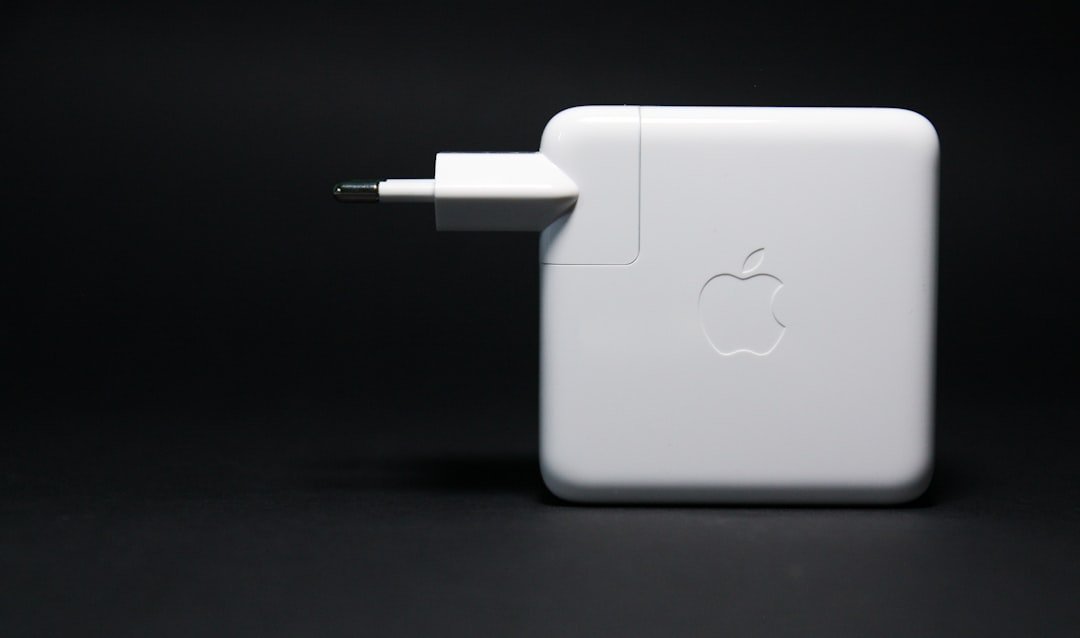In recent years, you may have noticed a significant shift in the way brands present themselves. The rise of minimalist branding has become a defining trend in the digital age, where simplicity and clarity reign supreme. As consumers are bombarded with information from every direction, brands are recognizing the need to cut through the noise.
Minimalist branding strips away the excess, allowing for a more focused and impactful message. This approach not only resonates with consumers but also aligns perfectly with the fast-paced nature of digital communication. The digital landscape has accelerated this trend, as brands seek to create memorable impressions in a matter of seconds.
With the average attention span dwindling, you might find that less is indeed more. Minimalist branding emphasizes clean lines, straightforward messaging, and a limited color palette, making it easier for consumers to engage with and remember a brand. This evolution reflects a broader cultural shift towards simplicity and authenticity, where consumers are increasingly drawn to brands that embody these values.
Key Takeaways
- Minimalist branding has gained popularity in the digital age due to its clean and simple design that resonates with modern consumers.
- The principles of minimalist branding focus on simplicity, clarity, and functionality, with an emphasis on essential elements and negative space.
- Minimalist branding in digital marketing involves using clean and simple visuals, concise messaging, and a focus on user experience to create a strong brand identity.
- Minimalist branding can impact consumer behavior by creating a sense of sophistication, trust, and modernity, leading to increased brand loyalty and engagement.
- Businesses can create a minimalist branding strategy by defining their brand’s core values, using a minimal color palette and typography, and focusing on a clean and intuitive design across all touchpoints.
Understanding the Principles of Minimalist Branding
At its core, minimalist branding is built on a few fundamental principles that guide its execution. First and foremost is the idea of clarity. You want your brand to communicate its message without unnecessary embellishments or distractions.
This means focusing on what truly matters—your core values, mission, and unique selling proposition. By honing in on these elements, you can create a brand identity that is both recognizable and relatable. Another key principle is consistency.
In a world where consumers interact with brands across multiple platforms, maintaining a cohesive visual and verbal identity is crucial. You should ensure that your logo, typography, and color scheme remain uniform across all touchpoints. This consistency not only reinforces your brand’s identity but also builds trust with your audience.
When consumers see a familiar design or message, they are more likely to feel a connection to your brand.
Minimalist Branding in Digital Marketing

As you navigate the world of digital marketing, embracing minimalist branding can significantly enhance your efforts. In an environment saturated with advertisements and promotional content, a minimalist approach can help your brand stand out. By focusing on essential elements—such as clear calls to action and straightforward messaging—you can create campaigns that resonate with your target audience.
Moreover, minimalist branding lends itself well to various digital marketing channels. Whether you’re crafting social media posts, designing email newsletters, or developing website content, simplicity can be your greatest ally. You might find that using fewer words and images allows your message to shine through more effectively.
This approach not only captures attention but also encourages engagement, as consumers are more likely to interact with content that is easy to digest.
The Impact of Minimalist Branding on Consumer Behavior
| Metrics | Findings |
|---|---|
| Brand Recognition | Minimalist branding can lead to increased brand recognition due to simplicity and memorability. |
| Consumer Perception | Consumers may perceive minimalist brands as more sophisticated and modern. |
| Purchase Intent | Minimalist branding can influence purchase intent by conveying a sense of quality and luxury. |
| Brand Loyalty | Minimalist branding may foster brand loyalty by creating a strong and consistent brand image. |
The impact of minimalist branding on consumer behavior is profound and multifaceted. As you consider how consumers interact with brands, it becomes clear that simplicity fosters a sense of trust and reliability. When a brand presents itself in a straightforward manner, it signals transparency and authenticity—qualities that resonate deeply with today’s discerning consumers.
You may find that this trust translates into loyalty, as customers are more likely to return to brands that they perceive as honest and uncomplicated. Additionally, minimalist branding can influence purchasing decisions. Research suggests that consumers are drawn to brands that prioritize simplicity in their messaging and design.
When faced with overwhelming choices, you might notice that people gravitate towards brands that offer clarity and ease of understanding. By eliminating clutter and focusing on what truly matters, you can create an environment where consumers feel empowered to make informed decisions.
Creating a Minimalist Branding Strategy for Your Business
To create an effective minimalist branding strategy for your business, start by defining your core values and mission. What do you stand for? What unique value do you offer?
By answering these questions, you can establish a strong foundation for your brand identity. Once you have clarity on these elements, you can begin to distill your messaging down to its essence. Next, consider your visual identity.
Choose a limited color palette and select typography that reflects your brand’s personality. You want your design choices to be intentional and cohesive across all platforms. As you develop your branding materials—such as logos, business cards, and website design—keep simplicity at the forefront of your mind.
Remember that every element should serve a purpose and contribute to the overall message you wish to convey.
Minimalist Branding in Social Media and Online Platforms

Capturing Attention in a Fast-Paced Environment
Social media platforms provide an excellent opportunity for brands to showcase their minimalist branding strategies. In an environment where users scroll quickly through their feeds, capturing attention is paramount. You can achieve this by creating visually striking posts that utilize negative space effectively.
Effective Communication on Social Media
By allowing your content to breathe, you can draw focus to key messages or calls to action. Moreover, consider how you communicate with your audience on social media. Embrace concise language and avoid jargon or overly complex phrases.
Building Brand Loyalty through Simple yet Impactful Content
You want your followers to understand your message at a glance. Engaging with your audience through simple yet impactful content can foster a sense of community and connection—qualities that are essential for building brand loyalty in the digital age.
Case Studies: Successful Implementation of Minimalist Branding
Examining successful case studies can provide valuable insights into the effectiveness of minimalist branding. One notable example is Apple, which has long embraced simplicity in its branding strategy. From its iconic logo to its clean product designs, Apple’s minimalist approach has become synonymous with innovation and quality.
The brand’s advertising campaigns often feature stark visuals paired with straightforward messaging, allowing consumers to focus on the product itself rather than extraneous details. Another example is Airbnb, which has successfully utilized minimalist branding to create a sense of belonging and community. The company’s logo—a simple yet recognizable symbol—reflects its mission of connecting people through travel experiences.
Airbnb’s website and app design prioritize user experience by presenting information in a clear and concise manner, making it easy for users to navigate and book accommodations.
The Future of Minimalist Branding in the Digital Age
As we look ahead, the future of minimalist branding in the digital age appears promising. With consumers increasingly seeking authenticity and simplicity in their interactions with brands, those who embrace minimalist principles will likely thrive. You may find that as technology continues to evolve, so too will the ways in which brands communicate their messages.
Moreover, as sustainability becomes a growing concern for consumers, minimalist branding aligns well with eco-friendly practices. By focusing on essential elements and reducing wasteful design choices, brands can convey their commitment to sustainability while also appealing to environmentally conscious consumers. In this way, minimalist branding not only serves as a powerful marketing tool but also reflects broader societal values.
In conclusion, embracing minimalist branding in the digital age offers numerous advantages for businesses looking to connect with their audience effectively. By understanding its principles and implementing strategies across various platforms, you can create a brand identity that resonates deeply with consumers while standing out in an increasingly crowded marketplace. As you move forward, consider how simplicity can enhance your brand’s message and foster lasting connections with your audience.
FAQs
What is minimalist branding?
Minimalist branding is a design approach that focuses on simplicity and minimalism. It involves using clean, simple, and uncluttered designs to convey a brand’s message and identity.
How does minimalist branding work in a digital world?
In a digital world, minimalist branding works by using clean and simple designs that are easily adaptable to various digital platforms such as websites, social media, and mobile apps. It focuses on creating a seamless and consistent brand experience across digital channels.
What are the benefits of minimalist branding in a digital world?
Some benefits of minimalist branding in a digital world include improved user experience, faster loading times, better readability, and a more modern and sophisticated brand image. It also allows for easier adaptability to different screen sizes and devices.
What are some examples of successful minimalist branding in the digital world?
Some examples of successful minimalist branding in the digital world include brands like Apple, Google, and Nike, which have all embraced clean and simple design principles in their digital presence. These brands have effectively used minimalist branding to convey their message and create a strong brand identity online.
How can a brand implement minimalist branding in the digital world?
A brand can implement minimalist branding in the digital world by focusing on clean and simple design elements, using a limited color palette, and prioritizing clear and concise messaging. It’s also important to ensure consistency across all digital touchpoints and to prioritize usability and functionality.
